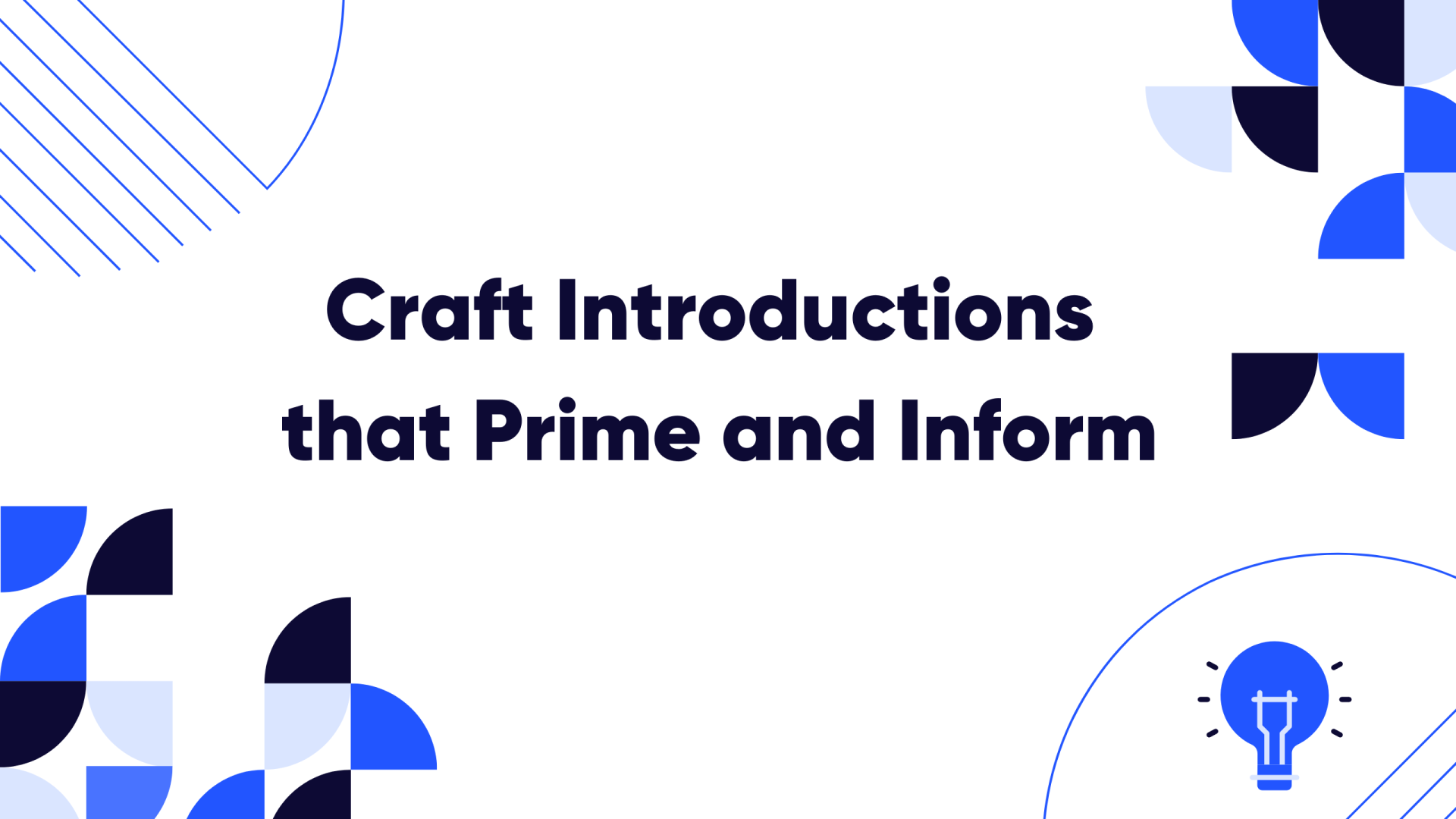writing
Craft Introductions that Prime and Inform
Explore the art of crafting introductions that captivate and convey credibility, setting the stage for compelling legal arguments and engaging narratives.
-
Joe Regalia

Introductions
Think about introductions for what they are: a conversation with a reader. If we take what we know about good conversations and apply it to writing, the importance of introductions becomes obvious. Those first moments are everything when we meet a stranger. They shape how we perceive them, how we gauge their credibility, and, ultimately, their trustworthiness.
So use the introduction to let readers meet you. When Judge Don Willett needed to introduce readers to a dry statutory-interpretation analysis, he took time to craft an introduction that showed off his skill and style so effectively that you can’t help but keep reading.
take this example:
“The lion‘s share of modern appellate judging is reading legislative language and decoding what it means. On that score, our interpretive precedent favors bright lines and sharp corners. If a case can be decided according to the statute itself, it must be decided according to the statute itself. This is a bedrock principle.
Today‘s case asks whether a notice provision in the Texas Premium Finance Act should be read as written, or instead whether the Court should adopt a ‘substantial compliance’ approach that excuses slip-ups. We opt for the former. The Legislature has codified ‘substantial compliance’ throughout Texas law—including in other Insurance Code notice provisions—forgiving less-than-strict conformity with various statutory commands. But it did not do so here. We decline to engraft what lawmakers declined to enact.”
Not only do you get a deep sense of the document’s takeaways, but the writer convinces us of his prowess by using:
- Alliteration: Using similar sounds to emphasize key words you want readers to notice (“Lion’s share…legislative language”; “read…written”; engraft…enact”).
- Targeted verbs: Using verbs that aim at a purposeful emotional or imagery-laden goal for readers. The writer wanted to frame substantial compliance negatively, so he frames the question as one of “excusing slip-ups” to subtly cast an unfavorable light. The legislature “codifies” the statute (making the act sound authoritative) and the court is merely “decoding” it (making the act sound rote without room for creative departure).
- Balanced words and phrases: The author uses balanced phrases that create a melody by putting certain words in consistent positions (“bright lines and sharp corners”; “engraft what lawmakers declined to enact”; “read as written”).
- Short sentences: One of the many simple ways you can emphasize a point, as we’ll explore in Chapter 8, is to use extra-short sentences to stop readers in their tracks. The writer does this here. Again and again.
Crafting introductions that answer your readers’ burning questions in the most memorable style will transform your legal writing. Let’s see how.
A Quick Summary
Strike the Right Impression
Introductions matter most because they set the stage and prime readers for the narrative that follows. The best ones provide a first impression that will convince readers to believe not just in the writing, but the writer.
Craft Your Opening Paragraphs
An effective opener both situates and persuades; it guides the reader to the dispute’s heart while embedding favorable details that subtly tilt the scales toward your client.
Focus On Your Persuasive Pitch
Serving up crucial facts and distilling your key rule pitches early not only captures attention but aligns your reader's focus with the arguments you care about.
Counter Biases and Leverage Themes
Anticipate potential preconceptions or biases by weaving in counternarratives and framing facts in a way that mitigates their impact.
Joe Regalia
Write.law co-founder Joe Regalia combines his experience as both practitioner and professor to create exciting new ways to teach legal skills. Learn more about Joe
Sign up for our newsletter!
Get writing and other legal practice tips delivered to your inbox every other Thursday.
Thanks for joining!
We’ve sent a welcome email to your inbox.
We’ve sent a welcome email to your inbox.
We're on a mission to make legal skills training engaging, effective, easy to use—and accessible to all.


